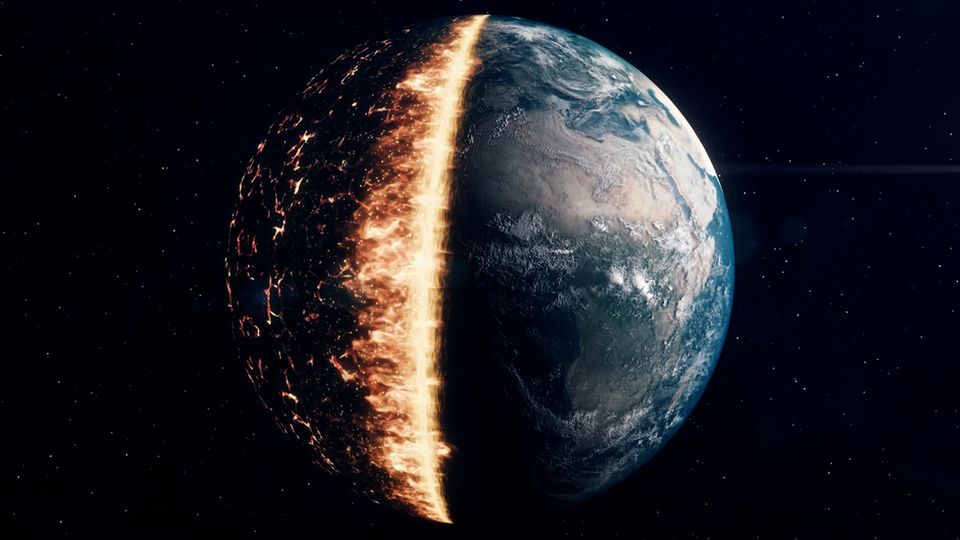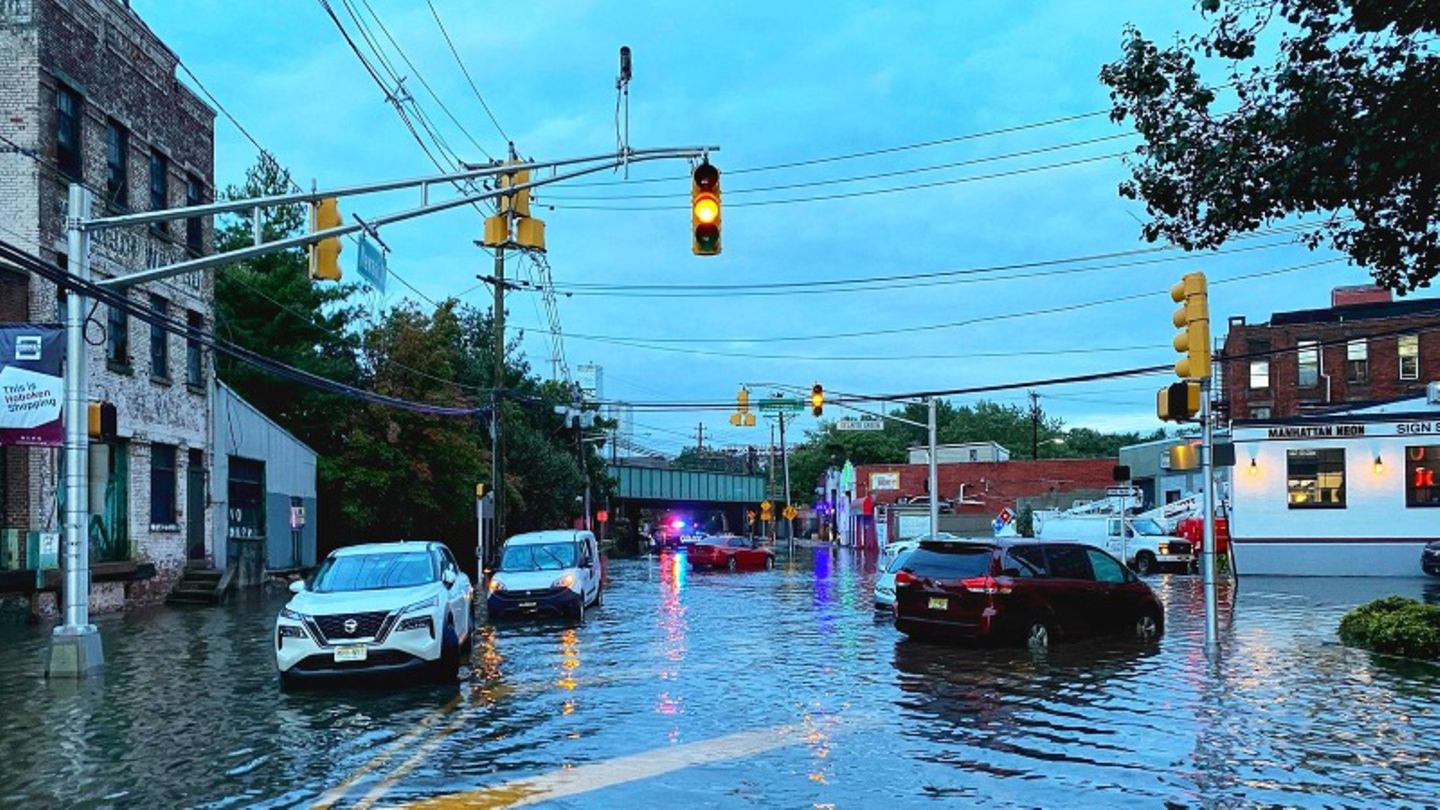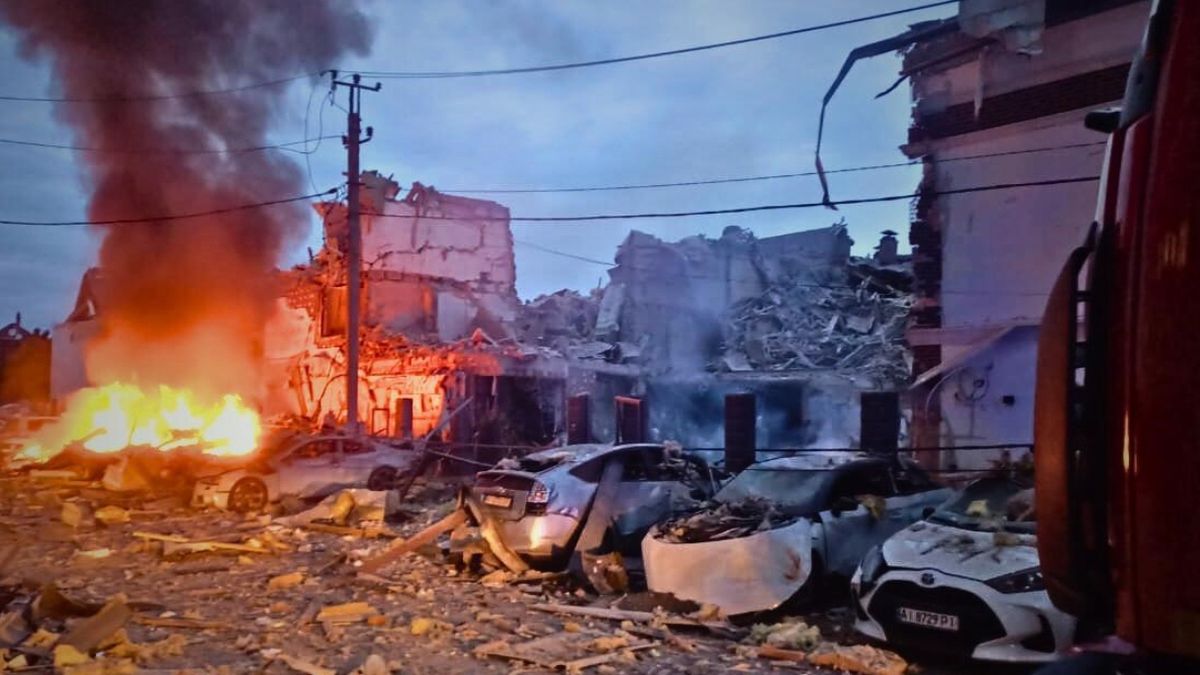Record rain, forest fires, temperatures over 50 degrees – this year, too, the USA will be plagued by a number of extreme weather phenomena. Storm of the century “Ida” could now bring about a definitive change in climate policy.
In Roland Emmerich’s disaster film “The Day After Tomorrow” from 2004, New York sinks into chaos and meter-high tidal waves as a result of climatic changes. Since Wednesday night, many Internet users in the USA have been comparing the historically heavy rains and floods in New York with the apocalyptic images from Hollywood. “The Day After Tomorrow” has become the present in 2021.
But it’s not just New York City, it’s not just the images of rushing rivers on the streets, cars drifting away and record rainfalls that are hardly comprehensible in their intensity. In the USA, extreme weather conditions seem to have increased significantly in the recent past, according to scientific statements, a consequence of the accelerated global warming. While the west suffers heat waves and devastating forest fires, and more and more hurricanes and tornadoes are raging in the south, the northeast is sinking into one of the wettest summers in history.
Extreme weather phenomena are increasing
“As a result of climate change, dry places are becoming drier and wet regions are becoming wetter in many parts of the world,” explains climate researcher Anders Levermann from the Potsdam Institute for Climate Impact Research. In the storm in New York, several climate change-related factors have now come together. “Hurricanes and typhoons draw their energy from the surface temperature of the ocean. Due to global warming, we are increasing this surface temperature and thus making more energy available to the hurricanes,” continued Levermann. The cyclones become stronger and strong cyclones become more numerous.
The impression that the number of extreme weather phenomena has recently increased significantly is supported by a study by the World Weather Organization (WMO). It had last reported that there were five times as many weather- or climate-related disasters between 2000 and 2009 than in the 1970s. Storms and floods make up almost 80 percent of these disasters.
The extreme North American summer had started with a heat wave, which according to researchers should not occur at all: almost 50 degrees were reached in some parts of the western United States and Canada – in some parts heat records were broken by four or five degrees. Climatologists then turned to the public in alarm: Even in view of the current rate of global warming, this is mathematically an event that is only likely to occur in one out of 1,000 years.
Again and again forest fires and water masses
The scientists also had a possible, shocking explanation for this enormous improbability: that climate change could have reached a threshold at which previously unimaginable weather extremes accumulate by leaps and bounds – an unforeseen climate escalation where millennial events would become normal. At the time, however, they stated that the data did not yet make this seem likely.
Forest fires had already broken out in California, Oregon and Washington on the US west coast last year, which experts described as “unprecedented”. And that year too, devastating fires raged. Moving smoke darkened the sky on the east coast of the United States thousands of kilometers away. The sun over New York – broken by particles of smoke – took on a red sheen and gave some people the feeling of being stuck in a Hollywood apocalypse.
US government promises help for those affected
After the record water masses in New York, for which the US weather service had to invent new colors for the extreme values on its graphics, Mayor Bill de Blasio presented himself to reporters on Thursday and concluded: “We are in a whole new world.” From now on, the city has to expect such storms on a permanent basis. At the same time, more must be done in the fight against the climate crisis.
He looked in the direction of Washington, where President Joe Biden spoke shortly afterwards. He described Hurricane Ida, the remains of which had flooded New York, as the fifth strongest hurricane in the United States since records began – days later, around a million households were without electricity. The hurricane season in the Atlantic this year is extraordinary anyway. “Elsa” was the first Atlantic hurricane of the year at the beginning of July – and therefore unusually early.

The National Hurricane Center also spoke of “above-average activity in tropical cyclones” in August. Three hurricanes formed during the month, two of which were particularly “strong hurricanes” – including “Ida”. Normally, one or two hurricanes would occur in August, with a particularly strong one only occurring every one or two years.
Wake up call for the USA?
Meanwhile, Biden warned that forest fires, flash floods and super storms will occur more often in the future because of the climate crisis. “This is not about politics,” he said, referring to the highly polarized US politics. Hurricane “Ida” doesn’t care if someone is a Democrat or a Republican. “It’s a matter of life and death, and we’re all in the same boat,” said Biden. “We have to take action.”
But in the face of such words and the more seriously pursued climate policy under Biden – which contrasts with that of his predecessor Donald Trump and parts of the country’s conservative elite – activists can only shrug their shoulders. Even before the World Climate Conference in Glasgow in November, they do not see nearly enough movement to achieve the goal agreed in Paris in 2015 of limiting global warming to 1.5 degrees as possible compared to pre-industrial times.
“It will be the same as at any other conference,” said the Swede Greta Thunberg of the German press agency recently soberly. “We are still ignoring the climate crisis”. For many Americans, the most recent events are likely to be the clearest wake-up call yet.
David William is a talented author who has made a name for himself in the world of writing. He is a professional author who writes on a wide range of topics, from general interest to opinion news. David is currently working as a writer at 24 hours worlds where he brings his unique perspective and in-depth research to his articles, making them both informative and engaging.




